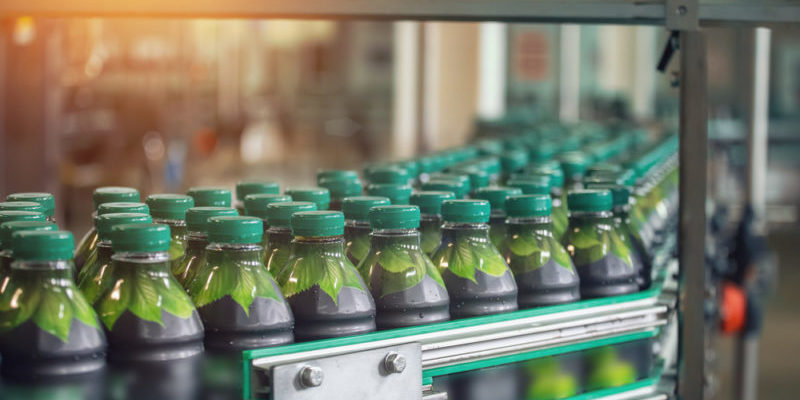Challenges in Food and Beverage Automation Barriers
Industrial automation solutions in the food and beverage manufacturing industry appear promising at the surface, but companies still face steep barriers to entry.
Theoretically, automation could save a considerable number of struggling food and beverage suppliers, but the hefty upfront investment required for this kind of digital transformation often stands in the way. It’s doubtless, the benefits to automating are a no-brainer among most business owners enduring the recent challenges posed by the unusual labor market and unpredictable supply chain.
But aside from budget constraints, why does the food and beverage industrial sector continue to lag in adopting new automated technology? History shows that the food and beverage production operations have always been sluggish to integrate emergent innovations in automation. Indeed, even as recent interest has spiked, there is little evidence of this trend changing in the immediate near term.
Senior analysts at EZSoft, Inc. have confirmed that several conditions continue to hamper food and beverage production companies from taking on updated automation solutions. The main factors are the batch-orientated nature of the industry and the uncertainty of how useful upgrades to hardware and software will last beyond the short term. They are confident, however, that companies leaders will eventually overcome their reticence as the need to automate becomes as inevitable as it is vital.
Colin Guheen of Capital One’s Commercial Banking Division states that “automation is really the long-term investment to being competitive, and is kind of the lifeblood of being a better business.” Guheen proceeds to iterate that dollar expenses are not the only reason food and beverage companies have been resisting automation for so many years. “You’ve got cultural expenses in your management team and how they’ve done things in the past. You’ve got opportunity costs – at some point, it’s going to slow things down before it can speed things up and you can get the return on the automation. And then there’s just the inertia costs, of people not wanting to change,” says Guheen.
Most companies are simply held back by fear of the unknown, especially concerning complex new technology that is generally unproven. And aside from the initial expense, what if the product doesn’t perform as advertised? Not dissimilarly, food production facility managers are concerned about excessive downtime and cumbersome employee training associated with implementing advanced automation solutions. That’s why developing a reliable road map to automating an operational facility remains crucial. It’s a process that takes a lot of long-term strategizing and a comprehensive approach to your organization as a whole.
Automating in stages
It is advisable that most food and beverage companies take a step approach to automating their operations, especially if it’s a mid-sized to small food production plant. Some automated equipment catering to facilities of this size can integrate into existing manual bakery equipment procedures. And, generally speaking, automated machinery is modular and can be built up with accessories and new components over time as production needs increase.
The main hurdle to building up an automated system in such a piecemeal way, however, is that it tends to create bottlenecks further along the line, even as you just eliminated one. Because the automated components to the system are so much more efficient, the areas that haven’t been upgraded remain slow in comparison, if not obsolete. This approach is more cost-efficient, but it can prove difficult to coordinate and may not result in a speedy ROI. The other issue is in mixing vendors. When you’re building up the facility over time with different parts, you’re more likely to end up with various technologies that don’t necessarily interface with each other well. This makes it difficult to accumulate useful data from monitoring software that’s critical for completing tasks like routine preventative maintenance procedures.
Automating in packaging areas first
In most food and beverage facilities, it’s easier to start automating in packaging than it is in processing. Manual packaging is a motion repetitive process amenable to automation because it’s easily supplanted with high-speed robotic devices. The packaging department is not entirely without challenges, however. Should a malfunction occur and a packaging machine goes down, it forces a stoppage upstream on the production line if the products can’t be accumulated upstream. Problems with automated packaging equipment can swiftly send the entire facility out of whack.
Robots for processing
While automating a facility’s processing area may not be as effective, robots have presented some interesting prospects for finding a quick return. Pick-and-place robots and robotic arms have made significant inroads into facilities, as they can help troubleshoot and speed up some of the more pressing areas of a production plant. Robots, however, can present some difficulty for delicate manual processes such as sanitary handling for specific goods. Gripper technology, however, continues to evolve, and these devices are increasingly capable of handling more and more products to standard. It’s anticipated that robots will eventually supplant automated machines in most facilities.
Is a “lights out” food production facility coming?
The short answer to that question is, unfortunately, no, not anytime soon. Food and beverage plants still necessitate a considerable human presence, and that’s not poised to change. Automated machinery requires operators to monitor, interact with, and frequently troubleshoot and repair. Indeed, it is humans that can make or break any digital transformation, especially one that steeped in a large upfront transition toward automation where the onboarding process is crucial.
Discovering industrial automation companies near me
There are countless full-service control systems providers in the US, but EZSoft, Inc. stands alone as premier automation technology software provider built upon decades of industry experience.
As you start along the elaborate path of automating your industrial food and beverage facility, consider completing the company’s brief online inquiry form, or contact them today at (484) 568-5040 for an obligation-free consultation. Let EZSoft show you how their standards for system development can significantly simplify future support of your next automated system.







